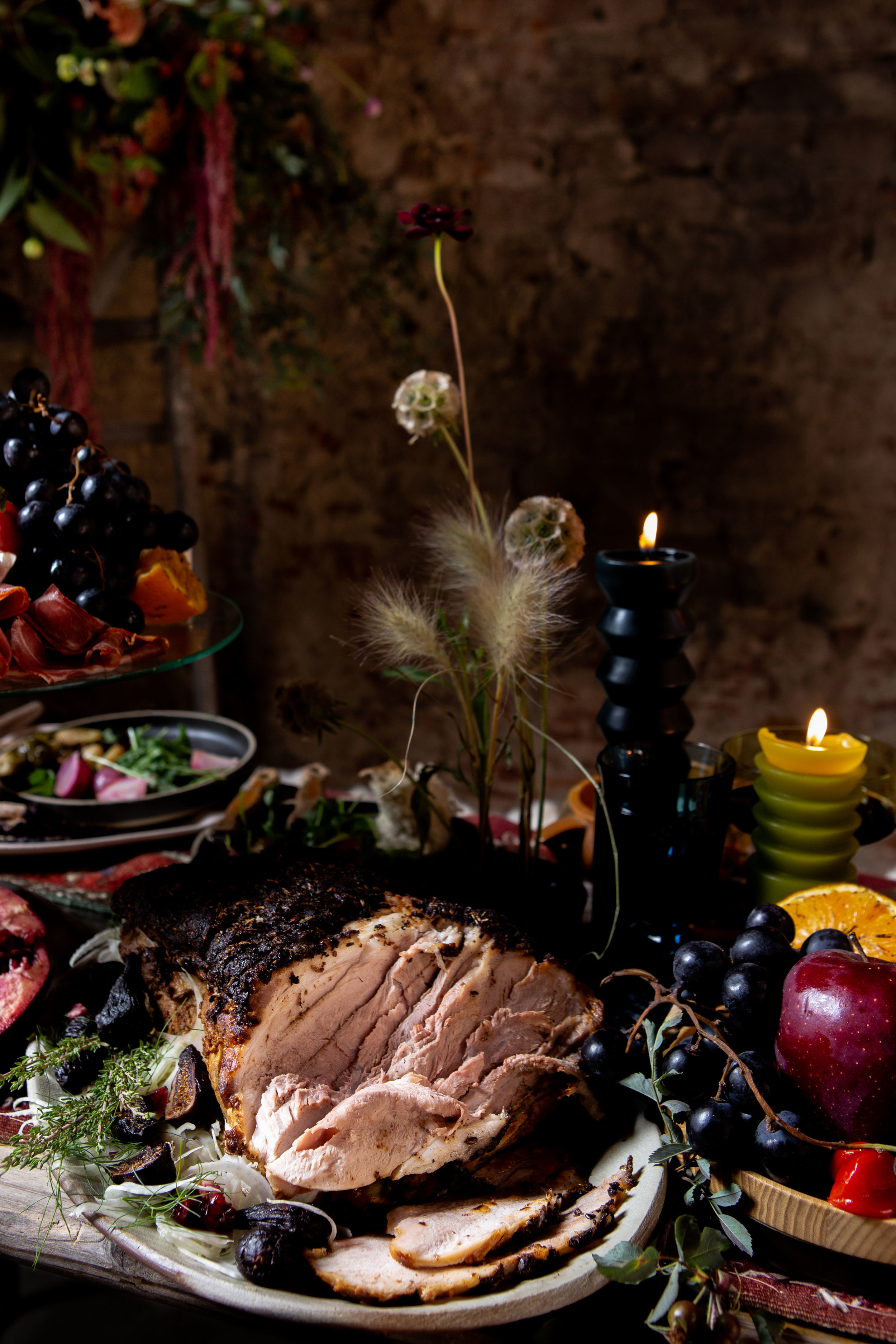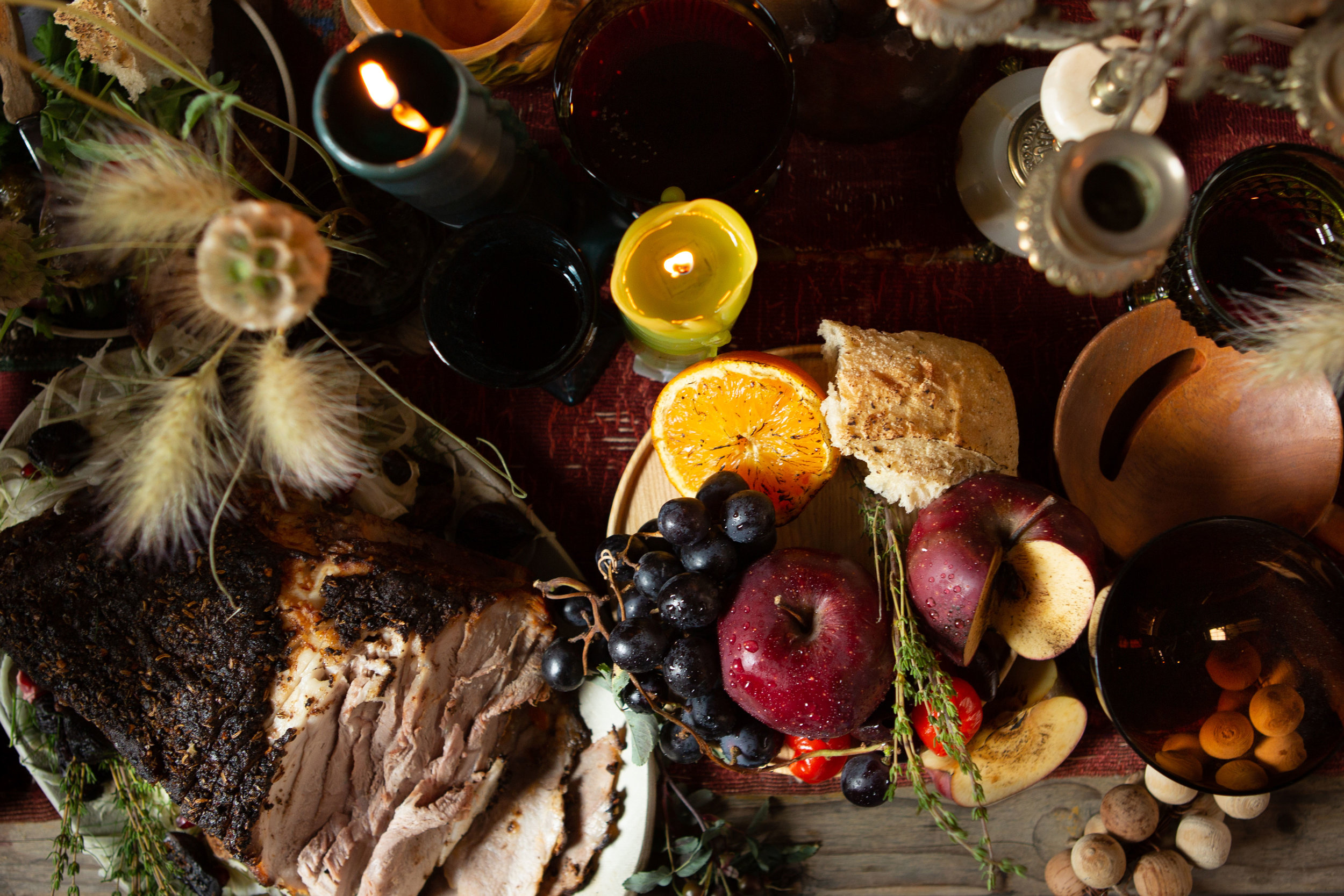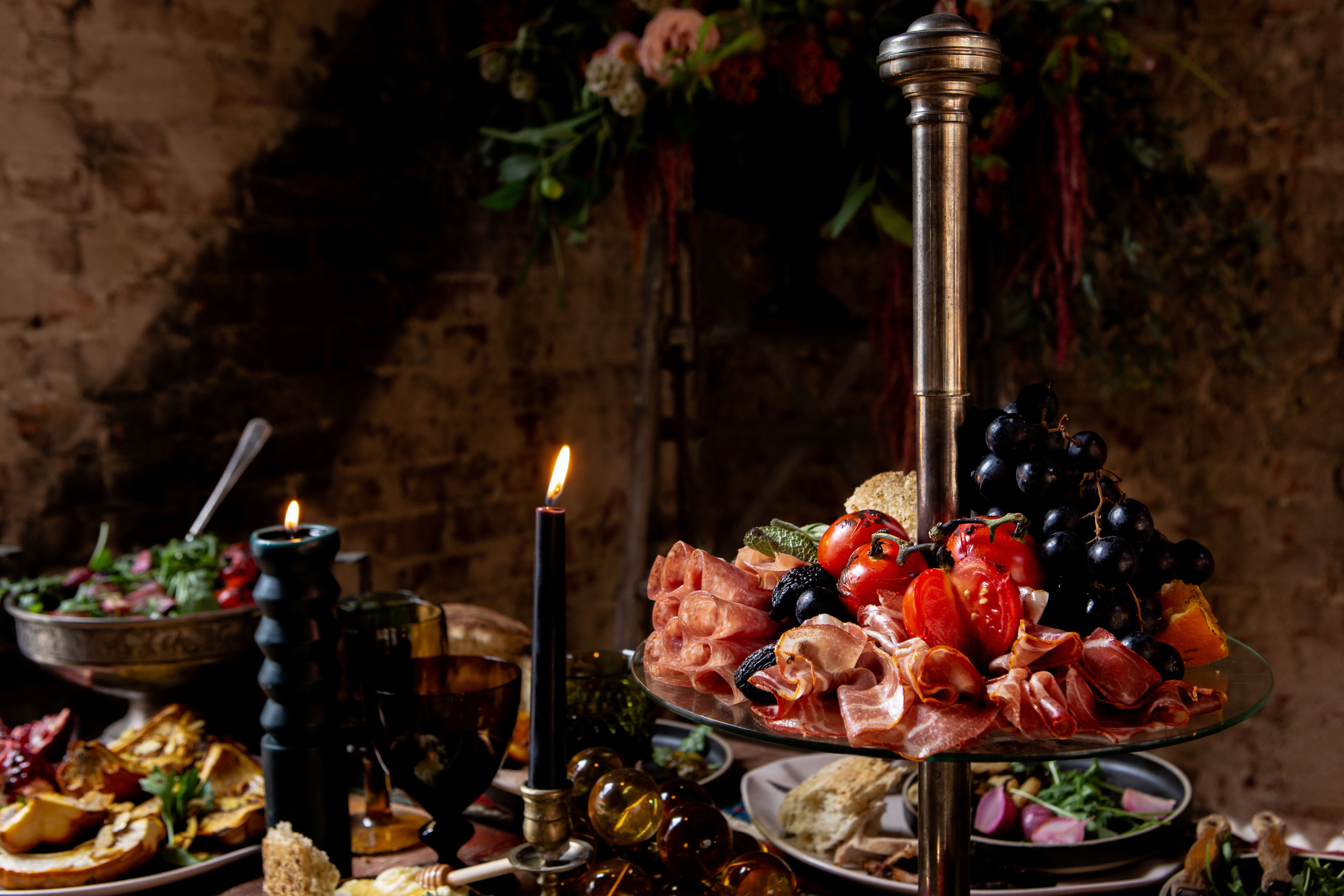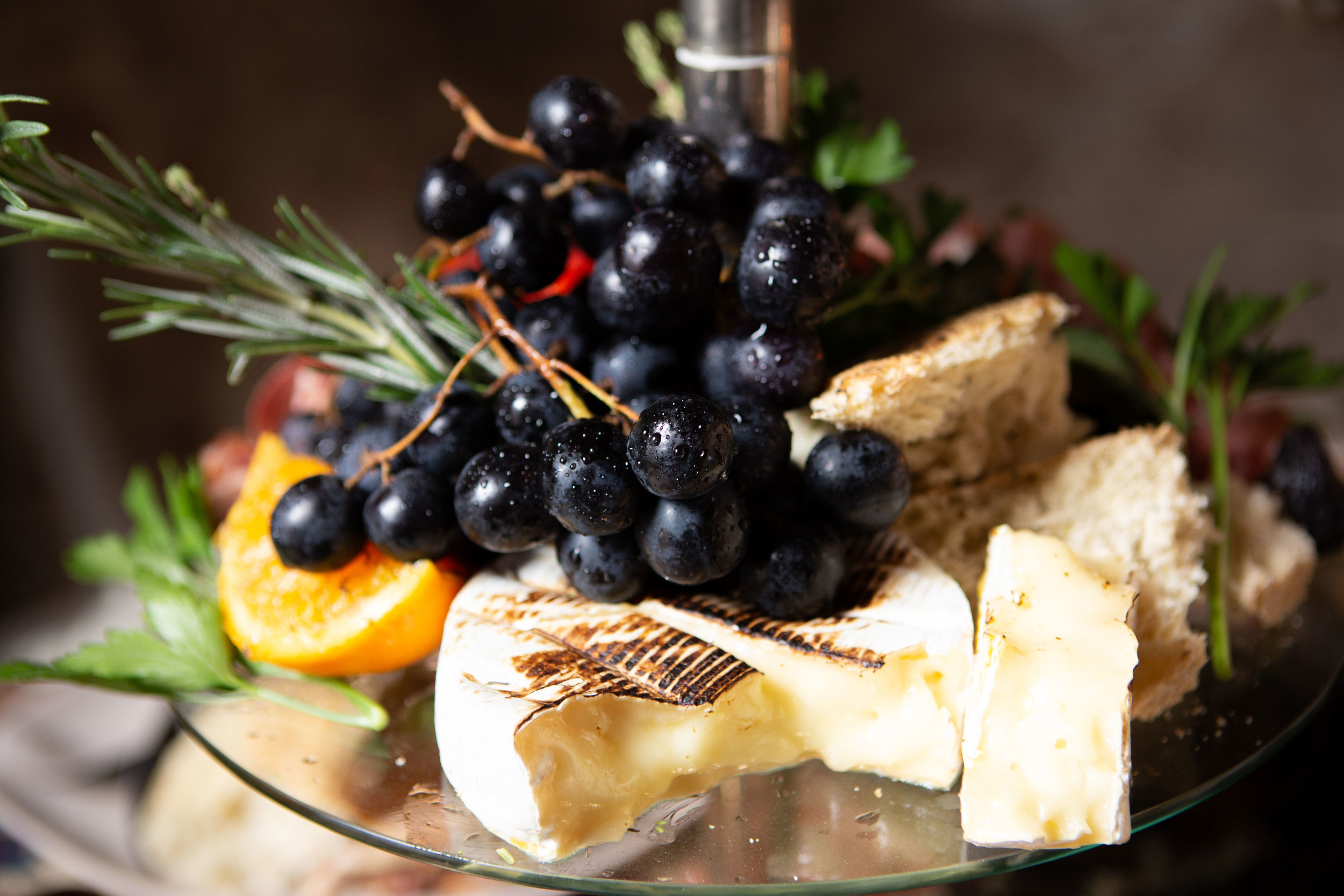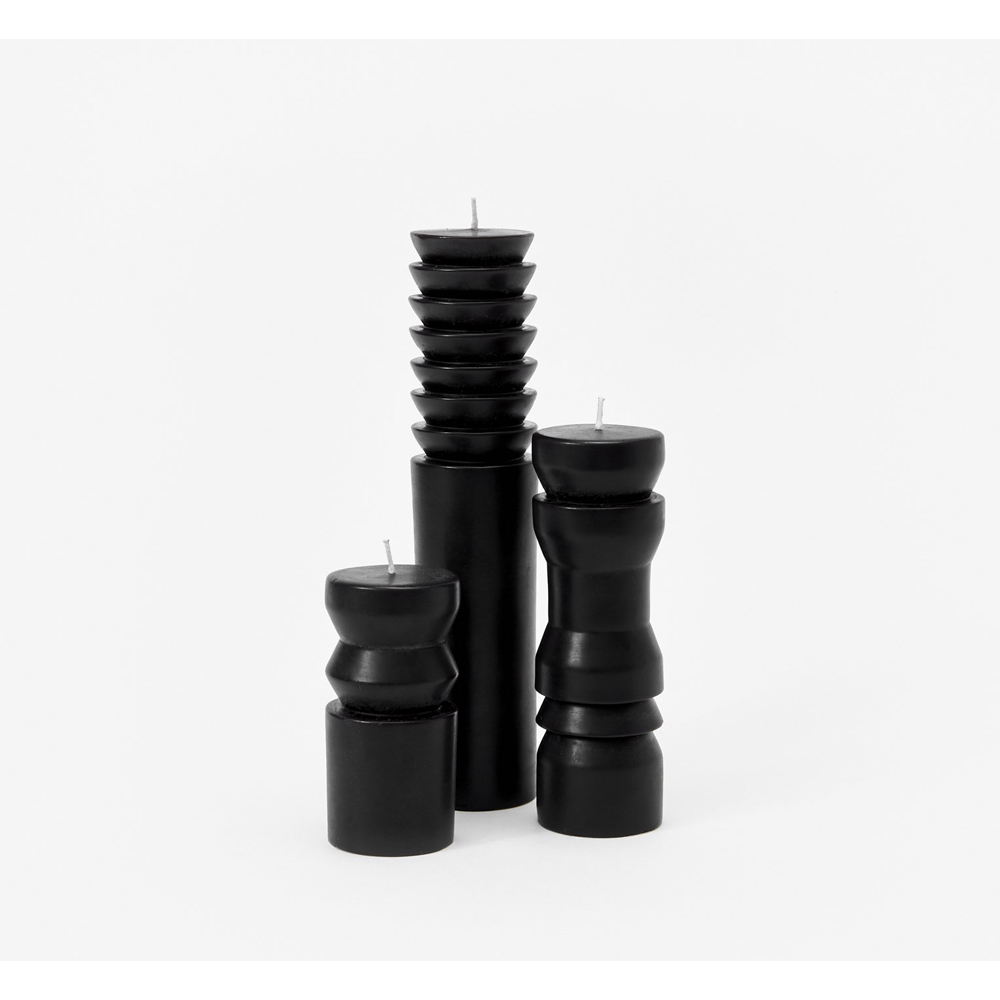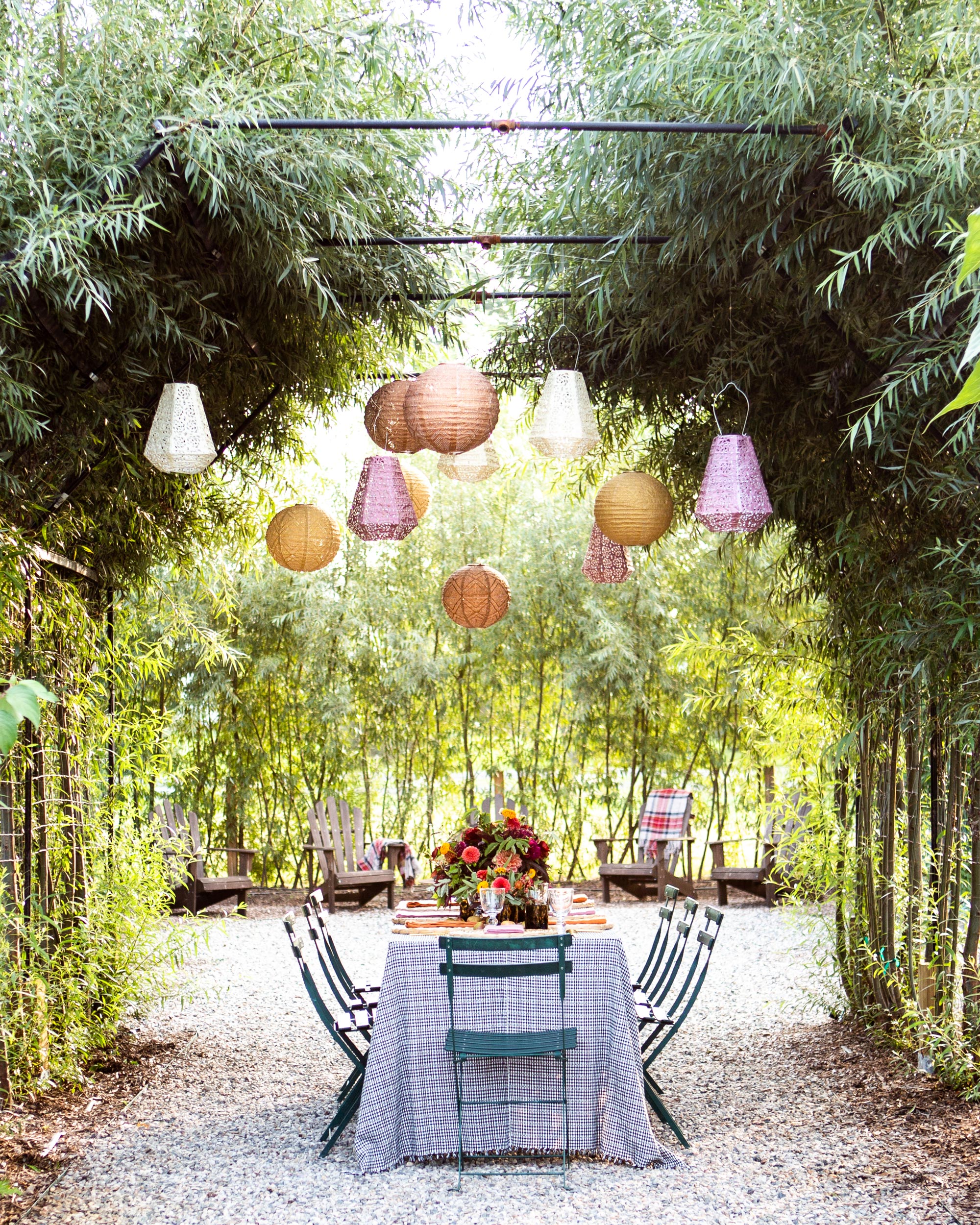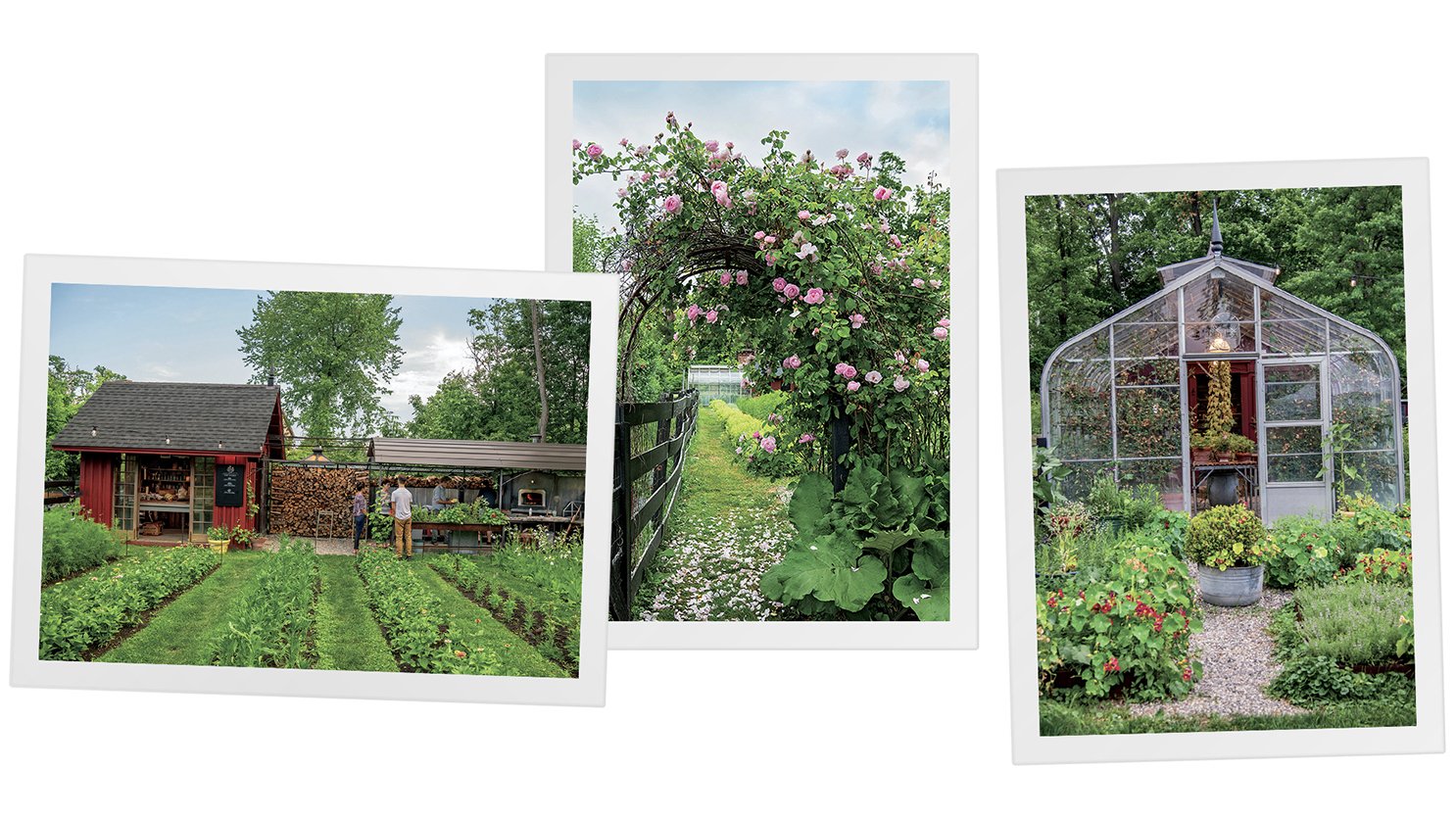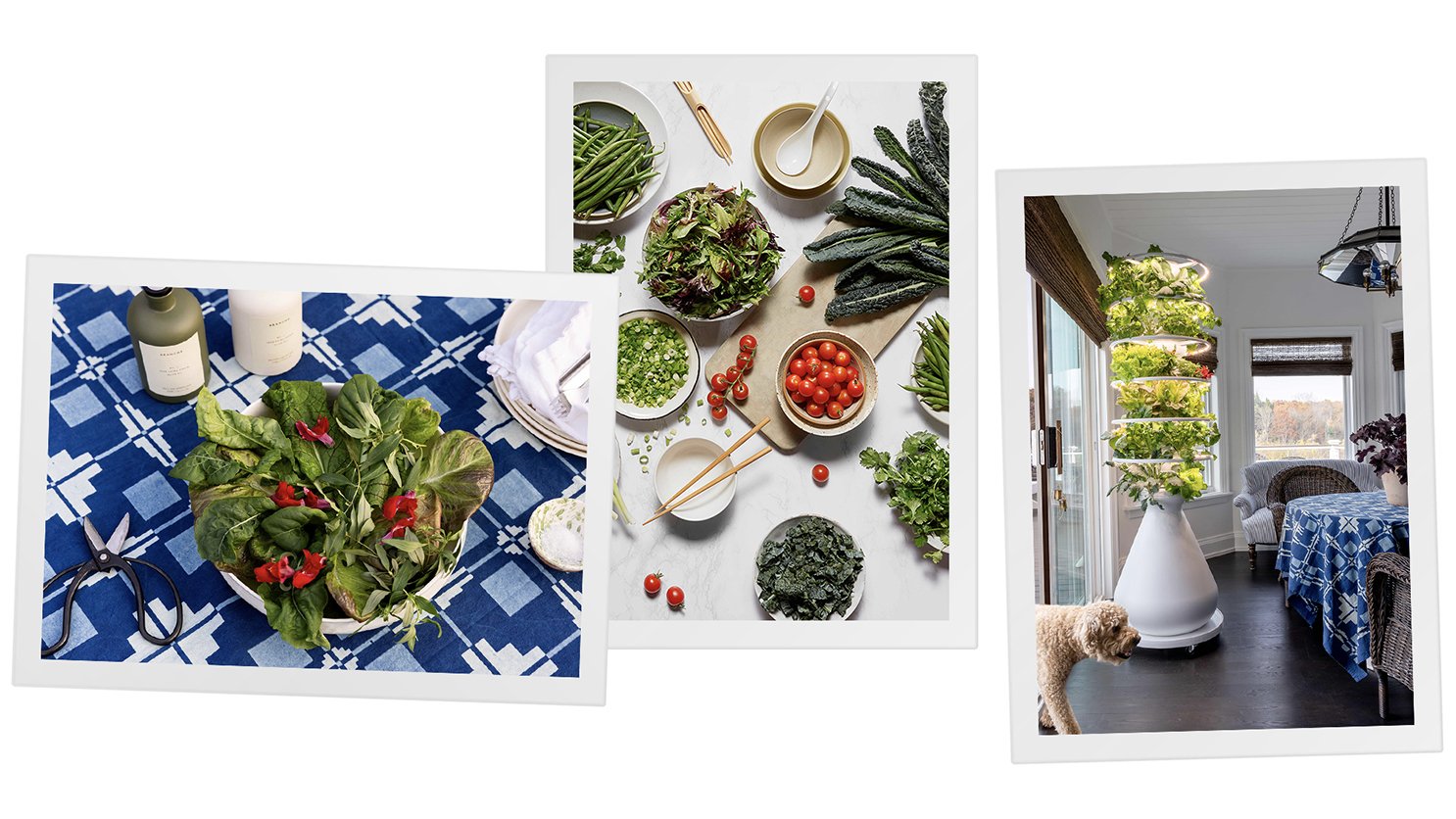The Salted Table: How to Plan a Perfect Fall Feast
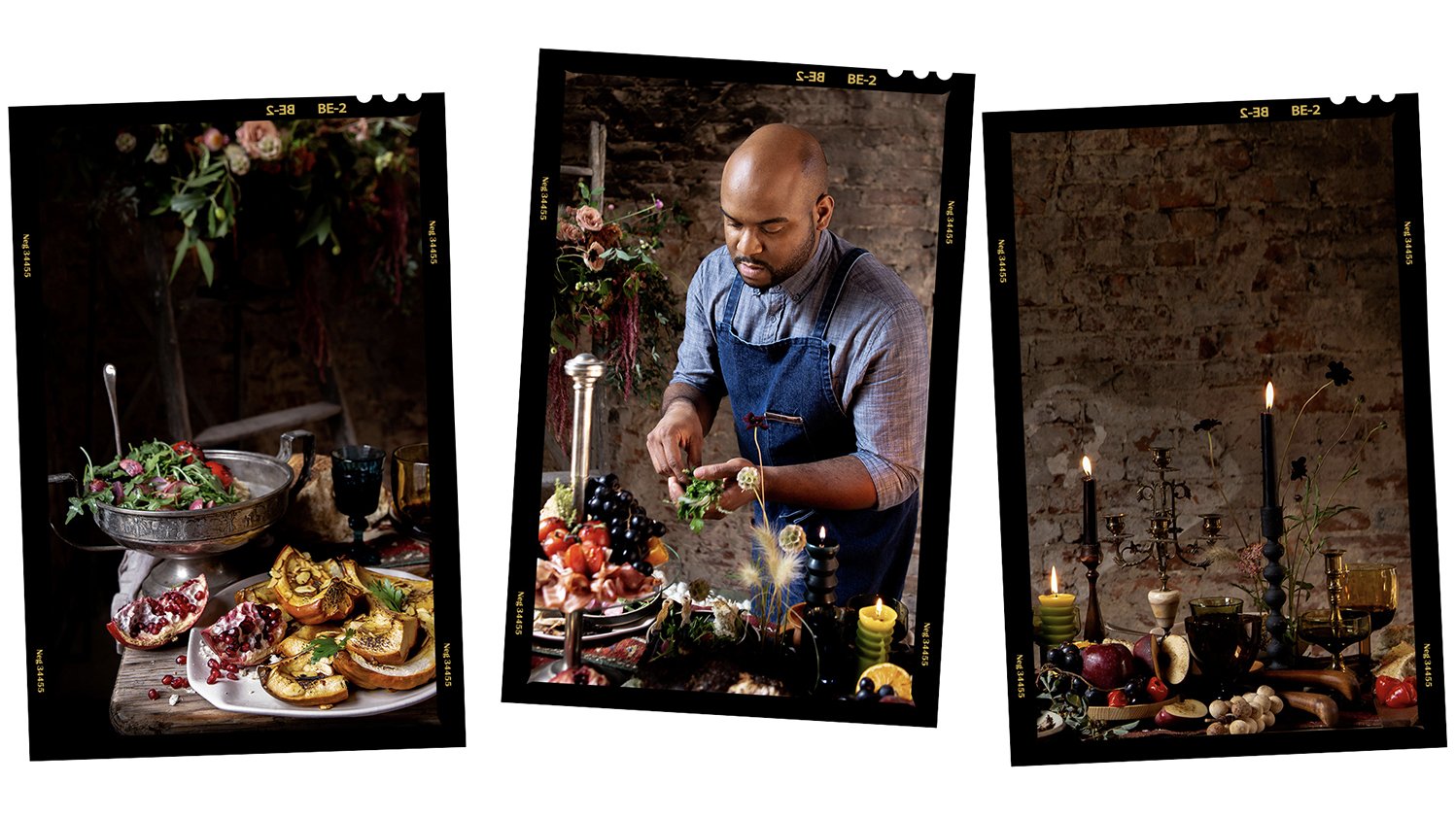
Written by S. Pajot | Photographed by Marta Xochilt Perez | Styled by Colleen Locke | Staged at Alabaster Collective | Art Directed by Michelle Adams
Our product recommendations include items from our sponsors and/or contain affiliate links, which means we may earn a commission when purchases are made. Rest assured, every item is genuinely chosen by our editorial team.
Everybody wants to eat Thanksgiving dinner. But cooking a bounteous feast for the whole family and a dozen other guests? That’s enough to send any amateur Escoffier into a downward spiral.
Worry not, though. There’s still time to pull together an elegant, seasonally inspired Thanksgiving menu, and Charles Hunter III, the Nashville-based private chef and food blogger behind The Salted Table, is here to help.
One of Hunter’s specialties is taking over dinner service when hosts would prefer not to handle the kitchen work themselves. “We come to your home to do your tablescape, prepare your meal, and create the whole ambience while you simply enjoy the people that you want to spend time with,” he explains.
But he’s also driven by a desire to quell the average eater’s insecurities about stepping up to the stove. “I want to inspire people to create one-on-one relationships with farmers, to learn more about their food, to want to feed people, and to not be afraid to cook,” he says. “I don’t want people to feel like a recipe is forcing them to go grocery shopping for a $50 ingredient list. I want them to know that they can simply open their fridge or their pantry and work with what’s in there.”
Cook What You Want to Eat
There’s no reason to mess with a dozen truffle-butter-basted, chanterelle-stuffed guinea hens, just for the sake of a fancy Thanksgiving. Find your holiday favorites, your personal classics, and then figure out ways to make them look and taste new again.
Born in Tennessee, then educated at the Rel Maples Institute of Culinary Arts, Hunter melds soul-food tradition with freewheeling haute- and world-cuisine flourishes. “My food is Southern based but culturally influenced,” he points out. “It has a comfort-food feel, but it has a lot of influences from other kinds of cooking that I’ve learned to love over the years. It’s a matter of incorporating unfamiliar spices and methods into cooking what I already like to eat.”
“I think sometimes people get caught up on really high-end ingredients, looking for the most expensive cheese and meat at the grocery store, so they can make a good impression on their dinner guests. But I say, forget that.”
Remember Your Roots
Tradition is about family. It’s about the past. It’s about ritual. And it’s about your own life story. “My great-grandmother’s and grandmother’s house—they lived in the same house, a duplex—there was always cooking happening on both sides,” Hunter recalls. “I would get off the bus, and my great-grandmother would be breaking down fish on the screened porch, or breaking down the half carcass of a deer that a neighbor brought over, or killing chickens, or boiling turtles, just doing the kind of eccentric Southern cooking that a lot of people from other parts of the country have never experienced. Back then, as a kid, I thought a lot of it was kind of gross, but it stuck with me, because I participated, I plucked feathers off the chickens, I boiled a whole hog’s head to make souse meat.”
We all have these most meaningful food moments in our lives. Make a dish in memory of those times. Bring them to your Thanksgiving table. Share them with family and friends.
Thanksgiving Dinner: Bonus Tip
BECOME A FRIDGE FORAGER
There’s no reason to needlessly waste. So before shopping for Thanksgiving supplies, take an inventory of your refrigerator. “I like to call myself a ‘fridge forager,’” Hunter says. “Whatever’s in the fridge is gonna make its way to the dinner plate, and it’s gonna be delicious.”
Thanksgiving Dinner: Bonus Tip
IT’S OK TO GO OFF-RECIPE
Recipes can be helpful, but don’t be afraid to “cook until it tastes right,” Hunter says. Cooking should be fun. The food should taste good. But don’t worry too much about “creating a dish that is ‘authentic.’” The important thing, Hunter insists, is “creating something that’s authentic to your love of food.”
Keep It Light
“I cook light-handed. I like to use a lot of fresh vegetables and fresh herbs,” Hunter says. “In most of my fall menus, with a protein, I will usually have a fruit sauce, instead of a cream sauce.”
When “people think of fall food, they think it needs to be really heavy, but it doesn’t,” he adds. “With the pork dish, I slowly roasted the pork, added some citrus notes, so it seems light when you take that first bite, as opposed to a heavy, red-wine-saturated approach. But it’s still very comforting, very fulfilling.”
Give Thanks for Fall
The entirety of Thanksgiving is bound up with the arrival of fall and the seasonal yield. So it’s not only important, but imperative, to “go with the flow of the seasons,” as Hunter says, “and what farmers are harvesting.”
The more recently reaped your ingredients, the better. “Pick food that resonates with people when you say fall. I took pears and charred them a little with my blowtorch and sprinkled a little sugar and honey on them,” he says, “so that you get some nice caramelization and a rustic char that maybe reminds the person eating of a fire being lit, sitting around with friends and warm blankets.
“When I’m planning a fall menu, I’m thinking about the leaves changing, the cool breezes starting to come in, the golden hue of the evenings, so I’m always aiming for warm comfort food that can translate to almost any culture. You can boil a beautiful pot of greens and throw bacon in it, or smoked turkey, or smoked tofu. There are just so many options if you open up your mind.”
Do Dessert Differently
We all love apple and pumpkin pie. But why not do dessert differently? “I love a pound cake with lavender icing and charred pears,” Hunter says, “but I also love the addition of vegetables into my dessert.”
And, no, he’s not kidding. “Something I like to do for fall is a carrot tart with port onions,” he explains. “It sounds really strange, but people are always surprised by how well it works as a dessert. Just a simple roasted-carrot puree with a few eggs, a bit of cream, and red onions that have been slowly cooked down in port until they’re super-tender and they just melt in your mouth; then a cherry demi-glace is drizzled over everything. It’s very versatile. You can shave a little white chocolate on it. You can shave a little dark chocolate on it. People always wonder, ‘Is this pumpkin? Is this butternut squash?’ No, it’s carrot and onions for dessert,” Hunter laughs. “Yeah, that’s happening.”
Five Floral Tips for Your Fall Feast
Every room needs flowers. So does every meal. And here are some easy, breezy guidelines for flawless arrangements from noted Nashville florist Melissa Broadwell.
Vintage Florals owner and lead designer Melissa Broadwell places the largest blooms and fills the gaps in her fall-dinner arrangement.
Pick Your Pitcher. “Choose a vessel that is no more than four to six inches wide and five or six inches tall, so that folks can see over the table arrangement,” Broadwell says. There’s nothing worse for conversation than a bulky (though beautiful) barrier between your dinner guests. Next: “Fill your vessel with clean water, and make a grid on top of the vase with clear or masking tape to make stem placement easier.”
Grab Some Native Foliage. “I like to cut greenery from my yard before going to the market to buy flowers. Find branches with shape and greenery that will fill out your vessel.”
Go Shopping for the Flashy Stuff. “At the market, look for a larger, focal bloom, a medium bloom, and then smaller, filler flowers,” Broadwell says. “You are looking to buy flowers in the same way that you would buy produce: the foliage should be healthy, firm, and green (make sure you look inside the wrapping!), and the petals should be bright, vibrant, and firm.”
Lay Your Base. “Begin arranging by placing your fullest foliage or filler flowers in the vase in an artful, asymmetrical shape, then place your longest, most shapely branches,” Broadwell suggests. “I like to think of a gentle, sideways S shape when arranging: higher on the left, and low and draping to the table on the right. Always give your stems a fresh, diagonal cut, and strip leaves that will be under the water line.”
Finish with Flourish. “Place your largest blooms lowest in your arrangement, then place the medium blooms following the curve of your greenery and branches. You are looking to fill in gaps, but also to create an interesting shape and allow the blooms to shine, not clustering them too tightly. Finally, fill in with the smallest blooms, tucking them in low, and also letting them dance up higher to give your piece a bit of whimsy.”




